-
Membership
Membership
Anyone with an interest in the history of the built environment is welcome to join the Society of Architectural Historians -
Conferences
Conferences
SAH Annual International Conferences bring members together for scholarly exchange and networking -
Publications
Publications
Through print and digital publications, SAH documents the history of the built environment and disseminates scholarship -
Programs
Programs
SAH promotes meaningful engagement with the history of the built environment through its programs -
Jobs & Opportunities
Jobs & Opportunities
SAH provides resources, fellowships, and grants to help further your career and professional life -
Support
Support
We invite you to support the educational mission of SAH by making a gift, becoming a member, or volunteering -
About
About
SAH promotes the study, interpretation, and conservation of the built environment worldwide for the benefit of all
Meet SAH’s New Contingent Faculty Committee
Aug 7, 2023
by
SAH News
The Society of Architectural Historians announces the appointment of the new Contingent Faculty Committee that is charged with developing strategies and hosting events to better support contingent faculty who are members of SAH. For the purposes of this committee, contingent faculty is defined widely and includes any faculty and scholars who are not in tenure-track positions. SAH Board Member Ashley Gardini is the founding chair of the Contingent Faculty Committee. SAH President Patricia Morton and SAH Executive Director Ben Thomas will serve as ex officio members of the committee. The committee members are listed below.
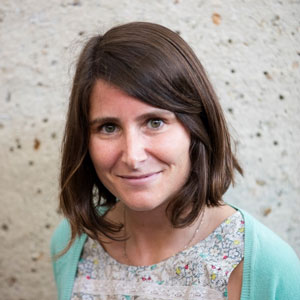 Macarena De la Vega de León is an architect (Universidad Politécnica de Madrid, 2010) who holds a Ph.D. in architectural history (University of Canberra, 2018). She is currently an honorary fellow with the Australian Centre for Architectural History and Urban and Cultural Heritage (ACAHUCH) at the University of Melbourne. She has also taught and conducted research at the University of Canberra and the University of Queensland in Australia, and Kent State University in the United States. Her field of interest is the study of architectural historiography—the study of the writing of history—with a recent focus on oral histories and the global turn. She is one of the “emerging voices” featured in Elie G. Haddad’s The Contested Territory of Architectural Theory (Routledge, 2023) and has coedited with Paul Walker the forthcoming JSAH roundtable, “Dialogues on the Global within and beyond Australasia” (September 2023). She served as communications and social media manager of the Society of Architectural Historians, Australia and New Zealand (SAHANZ), and is now a member of the Editorial Board of SAHANZ.
Macarena De la Vega de León is an architect (Universidad Politécnica de Madrid, 2010) who holds a Ph.D. in architectural history (University of Canberra, 2018). She is currently an honorary fellow with the Australian Centre for Architectural History and Urban and Cultural Heritage (ACAHUCH) at the University of Melbourne. She has also taught and conducted research at the University of Canberra and the University of Queensland in Australia, and Kent State University in the United States. Her field of interest is the study of architectural historiography—the study of the writing of history—with a recent focus on oral histories and the global turn. She is one of the “emerging voices” featured in Elie G. Haddad’s The Contested Territory of Architectural Theory (Routledge, 2023) and has coedited with Paul Walker the forthcoming JSAH roundtable, “Dialogues on the Global within and beyond Australasia” (September 2023). She served as communications and social media manager of the Society of Architectural Historians, Australia and New Zealand (SAHANZ), and is now a member of the Editorial Board of SAHANZ.
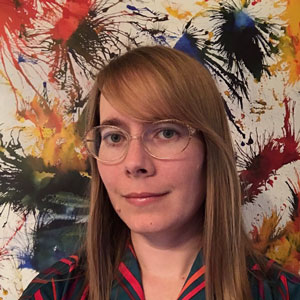 Ashley Gardini is an architectural historian based in the San Francisco Bay Area. She is an adjunct instructor of art and architectural histories at local community colleges. She also writes the monthly The Where We Were column for JSTOR Daily. Gardini earned her M.A. in art history and visual culture from San Jose State University. Her current research interests focus on education and public engagement with architectural history, with a desired focus on students who have not been engaged with the built environment prior to college. In March 2019, she was featured in “The Realities of Adjuncting Today,” for the Contingent Talk series, produced for CAA Conversations Podcast, which focused on the precarious nature of the academic labor market. Gardini has served on the SAH Board since July 2021 and also serves on the SAH Membership Committee. She served on the Advisory Committee for the SAH Data Project from 2019 to 2021.
Ashley Gardini is an architectural historian based in the San Francisco Bay Area. She is an adjunct instructor of art and architectural histories at local community colleges. She also writes the monthly The Where We Were column for JSTOR Daily. Gardini earned her M.A. in art history and visual culture from San Jose State University. Her current research interests focus on education and public engagement with architectural history, with a desired focus on students who have not been engaged with the built environment prior to college. In March 2019, she was featured in “The Realities of Adjuncting Today,” for the Contingent Talk series, produced for CAA Conversations Podcast, which focused on the precarious nature of the academic labor market. Gardini has served on the SAH Board since July 2021 and also serves on the SAH Membership Committee. She served on the Advisory Committee for the SAH Data Project from 2019 to 2021.
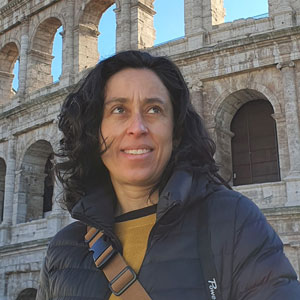 Maria Elisa Navarro Morales is an architect from Universidad de Los Andes, Bogotá, Colombia (1999). She holds a master’s (2006) and a Ph.D. (2013) in history and theory of architecture from McGill University, Canada. She has taught architecture in schools in Canada and Colombia and currently works as an assistant professor in the Department of History of Art and Architecture at Trinity College Dublin. Her research focuses on early modern architecture and architectural theory with a focus on Spain, Italy, and Colonial Latin America. Between 2017 and 2023 Dr. Navarro Morales was part of the research group, Spanish Italy and the Iberian Americas, directed by Columbia University professors Alessandra Russo and Michael Cole and funded by the Getty Foundation Connecting Art Histories program. She is currently writing the first comprehensive monograph in English on Juan Caramuel’s architectural theory as presented in the treatise Architectura Civil Recta y Obliqua (1678–79), where both the published treatise and the unpublished fourth volume, Arquitectura Natural (1680 c), are examined.
Maria Elisa Navarro Morales is an architect from Universidad de Los Andes, Bogotá, Colombia (1999). She holds a master’s (2006) and a Ph.D. (2013) in history and theory of architecture from McGill University, Canada. She has taught architecture in schools in Canada and Colombia and currently works as an assistant professor in the Department of History of Art and Architecture at Trinity College Dublin. Her research focuses on early modern architecture and architectural theory with a focus on Spain, Italy, and Colonial Latin America. Between 2017 and 2023 Dr. Navarro Morales was part of the research group, Spanish Italy and the Iberian Americas, directed by Columbia University professors Alessandra Russo and Michael Cole and funded by the Getty Foundation Connecting Art Histories program. She is currently writing the first comprehensive monograph in English on Juan Caramuel’s architectural theory as presented in the treatise Architectura Civil Recta y Obliqua (1678–79), where both the published treatise and the unpublished fourth volume, Arquitectura Natural (1680 c), are examined.
Krista Reimer is a part-time lecturer in the Department of Landscape Architecture at the University of Pennsylvania where she teaches seminars on design methods with an emphasis on historical context. In addition to teaching, she works in Philadelphia as a landscape designer on the preservation, adaptation, and implementation of gardens and parks.
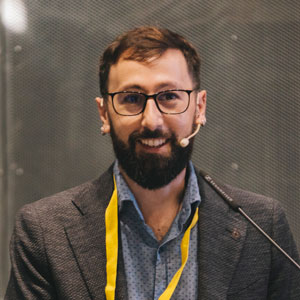 Manuel ‘Saga’ Sánchez García is a research associate at Universidad de Granada GI HUM813 (Spain), having just returned to his alma mater after finishing a full term as GLS Research Fellow at Dumbarton Oaks. Saga also serves as associate editor for Architectural Histories, the open access journal of the European Architectural History Network (EAHN). He is a licensed architect (Universidad de Granada, 2013) who holds a Master of Architecture from Universidad de los Andes (Bogotá, 2016), a Ph.D. in architectural history from Politecnico di Torino (2022) and a Ph.D. in art history from Universidad de Granada (2022). Saga’s work focuses on the early modern period, including his Ph.D. dissertation, “Siblings Overseas,” and the monograph, Granada Des-Granada (Ed. Uniandes, 2018). He has ventured into other lines of research with the edited volume Mensajes de Modernidad en Revista Proa (Ed.Uniandes, 2020) on the leading 20th-century Colombian architectural magazine, and the Special Collection “Historic Spaces and Architectures in Videogames” for Culture & History Digital Journal (Ed. CSIC, 2020), while also writing for media such as National Geographic Historia, ArchDaily, and Fundación Arquia.
Manuel ‘Saga’ Sánchez García is a research associate at Universidad de Granada GI HUM813 (Spain), having just returned to his alma mater after finishing a full term as GLS Research Fellow at Dumbarton Oaks. Saga also serves as associate editor for Architectural Histories, the open access journal of the European Architectural History Network (EAHN). He is a licensed architect (Universidad de Granada, 2013) who holds a Master of Architecture from Universidad de los Andes (Bogotá, 2016), a Ph.D. in architectural history from Politecnico di Torino (2022) and a Ph.D. in art history from Universidad de Granada (2022). Saga’s work focuses on the early modern period, including his Ph.D. dissertation, “Siblings Overseas,” and the monograph, Granada Des-Granada (Ed. Uniandes, 2018). He has ventured into other lines of research with the edited volume Mensajes de Modernidad en Revista Proa (Ed.Uniandes, 2020) on the leading 20th-century Colombian architectural magazine, and the Special Collection “Historic Spaces and Architectures in Videogames” for Culture & History Digital Journal (Ed. CSIC, 2020), while also writing for media such as National Geographic Historia, ArchDaily, and Fundación Arquia.
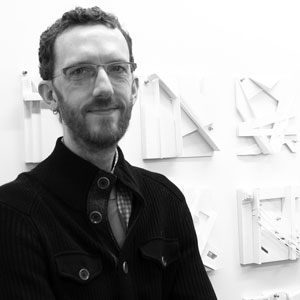 Brett Tippey serves as program coordinator for Architectural Studies and associate professor on the non-tenure track in the College of Architecture and Environmental Design at Kent State University. He holds a doctorate in history and critical analysis of twentieth-century Spanish architecture (2011) from the University of Navarra (Spain), a master’s in architectural design (2005) from the University of Navarra and a Bachelor of Architecture (2001) from Ball State University. He teaches design studios and courses in the history of modern architecture. His research and publications focus on the work of Richard Neutra and twentieth-century Spanish architecture; his doctoral dissertation analyzed Neutra’s involvement in Spain in the 1950s and 1960s. His research has appeared in scholarly journals such as the Journal of the Society of Architectural Historians, Architectural History, Fabrications, and DOCOMOMO Journal, and he has presented his work in the conferences of the Society of Architectural Historians, the Society of Architectural Historians Australia/New Zealand, the European Architectural History Network, and DOCOMOMO International. Dr. Tippey is also a registered architect.
Brett Tippey serves as program coordinator for Architectural Studies and associate professor on the non-tenure track in the College of Architecture and Environmental Design at Kent State University. He holds a doctorate in history and critical analysis of twentieth-century Spanish architecture (2011) from the University of Navarra (Spain), a master’s in architectural design (2005) from the University of Navarra and a Bachelor of Architecture (2001) from Ball State University. He teaches design studios and courses in the history of modern architecture. His research and publications focus on the work of Richard Neutra and twentieth-century Spanish architecture; his doctoral dissertation analyzed Neutra’s involvement in Spain in the 1950s and 1960s. His research has appeared in scholarly journals such as the Journal of the Society of Architectural Historians, Architectural History, Fabrications, and DOCOMOMO Journal, and he has presented his work in the conferences of the Society of Architectural Historians, the Society of Architectural Historians Australia/New Zealand, the European Architectural History Network, and DOCOMOMO International. Dr. Tippey is also a registered architect.
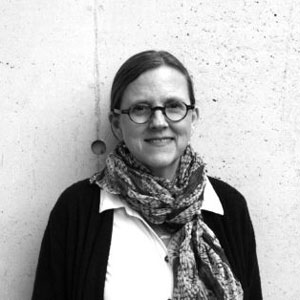 Katherine (Kathy) Wheeler is a lecturer at the University of Tennessee College of Architecture + Design. Prior to returning to her alma mater in 2019, she taught for over a decade at the University of Miami. She received her Ph.D. in history, theory, and criticism at the Massachusetts Institute of Technology and a master’s in architectural history at the University of Virginia. After completing her Bachelor of Architecture at University of Tennessee, Wheeler practiced architecture in Knoxville, Providence, and Washington, D.C. Her time spent as a practicing architect has deeply influenced her research and teaching. Her current research addresses architectural and construction practices in late Victorian Scotland. This work is an extension of her book, Victorian Perceptions of Renaissance Architecture (Routledge, 2014). She has also recently published and presented research on the miniature and contemporary architecture, as well as Ruskin and emotion in architecture. Wheeler sees her research as skirting the edges of the formal discipline and practice of architecture to gain a deeper understanding of how we design, build, and make “place.”
Katherine (Kathy) Wheeler is a lecturer at the University of Tennessee College of Architecture + Design. Prior to returning to her alma mater in 2019, she taught for over a decade at the University of Miami. She received her Ph.D. in history, theory, and criticism at the Massachusetts Institute of Technology and a master’s in architectural history at the University of Virginia. After completing her Bachelor of Architecture at University of Tennessee, Wheeler practiced architecture in Knoxville, Providence, and Washington, D.C. Her time spent as a practicing architect has deeply influenced her research and teaching. Her current research addresses architectural and construction practices in late Victorian Scotland. This work is an extension of her book, Victorian Perceptions of Renaissance Architecture (Routledge, 2014). She has also recently published and presented research on the miniature and contemporary architecture, as well as Ruskin and emotion in architecture. Wheeler sees her research as skirting the edges of the formal discipline and practice of architecture to gain a deeper understanding of how we design, build, and make “place.”
 Macarena De la Vega de León is an architect (Universidad Politécnica de Madrid, 2010) who holds a Ph.D. in architectural history (University of Canberra, 2018). She is currently an honorary fellow with the Australian Centre for Architectural History and Urban and Cultural Heritage (ACAHUCH) at the University of Melbourne. She has also taught and conducted research at the University of Canberra and the University of Queensland in Australia, and Kent State University in the United States. Her field of interest is the study of architectural historiography—the study of the writing of history—with a recent focus on oral histories and the global turn. She is one of the “emerging voices” featured in Elie G. Haddad’s The Contested Territory of Architectural Theory (Routledge, 2023) and has coedited with Paul Walker the forthcoming JSAH roundtable, “Dialogues on the Global within and beyond Australasia” (September 2023). She served as communications and social media manager of the Society of Architectural Historians, Australia and New Zealand (SAHANZ), and is now a member of the Editorial Board of SAHANZ.
Macarena De la Vega de León is an architect (Universidad Politécnica de Madrid, 2010) who holds a Ph.D. in architectural history (University of Canberra, 2018). She is currently an honorary fellow with the Australian Centre for Architectural History and Urban and Cultural Heritage (ACAHUCH) at the University of Melbourne. She has also taught and conducted research at the University of Canberra and the University of Queensland in Australia, and Kent State University in the United States. Her field of interest is the study of architectural historiography—the study of the writing of history—with a recent focus on oral histories and the global turn. She is one of the “emerging voices” featured in Elie G. Haddad’s The Contested Territory of Architectural Theory (Routledge, 2023) and has coedited with Paul Walker the forthcoming JSAH roundtable, “Dialogues on the Global within and beyond Australasia” (September 2023). She served as communications and social media manager of the Society of Architectural Historians, Australia and New Zealand (SAHANZ), and is now a member of the Editorial Board of SAHANZ. Ashley Gardini is an architectural historian based in the San Francisco Bay Area. She is an adjunct instructor of art and architectural histories at local community colleges. She also writes the monthly The Where We Were column for JSTOR Daily. Gardini earned her M.A. in art history and visual culture from San Jose State University. Her current research interests focus on education and public engagement with architectural history, with a desired focus on students who have not been engaged with the built environment prior to college. In March 2019, she was featured in “The Realities of Adjuncting Today,” for the Contingent Talk series, produced for CAA Conversations Podcast, which focused on the precarious nature of the academic labor market. Gardini has served on the SAH Board since July 2021 and also serves on the SAH Membership Committee. She served on the Advisory Committee for the SAH Data Project from 2019 to 2021.
Ashley Gardini is an architectural historian based in the San Francisco Bay Area. She is an adjunct instructor of art and architectural histories at local community colleges. She also writes the monthly The Where We Were column for JSTOR Daily. Gardini earned her M.A. in art history and visual culture from San Jose State University. Her current research interests focus on education and public engagement with architectural history, with a desired focus on students who have not been engaged with the built environment prior to college. In March 2019, she was featured in “The Realities of Adjuncting Today,” for the Contingent Talk series, produced for CAA Conversations Podcast, which focused on the precarious nature of the academic labor market. Gardini has served on the SAH Board since July 2021 and also serves on the SAH Membership Committee. She served on the Advisory Committee for the SAH Data Project from 2019 to 2021. Maria Elisa Navarro Morales is an architect from Universidad de Los Andes, Bogotá, Colombia (1999). She holds a master’s (2006) and a Ph.D. (2013) in history and theory of architecture from McGill University, Canada. She has taught architecture in schools in Canada and Colombia and currently works as an assistant professor in the Department of History of Art and Architecture at Trinity College Dublin. Her research focuses on early modern architecture and architectural theory with a focus on Spain, Italy, and Colonial Latin America. Between 2017 and 2023 Dr. Navarro Morales was part of the research group, Spanish Italy and the Iberian Americas, directed by Columbia University professors Alessandra Russo and Michael Cole and funded by the Getty Foundation Connecting Art Histories program. She is currently writing the first comprehensive monograph in English on Juan Caramuel’s architectural theory as presented in the treatise Architectura Civil Recta y Obliqua (1678–79), where both the published treatise and the unpublished fourth volume, Arquitectura Natural (1680 c), are examined.
Maria Elisa Navarro Morales is an architect from Universidad de Los Andes, Bogotá, Colombia (1999). She holds a master’s (2006) and a Ph.D. (2013) in history and theory of architecture from McGill University, Canada. She has taught architecture in schools in Canada and Colombia and currently works as an assistant professor in the Department of History of Art and Architecture at Trinity College Dublin. Her research focuses on early modern architecture and architectural theory with a focus on Spain, Italy, and Colonial Latin America. Between 2017 and 2023 Dr. Navarro Morales was part of the research group, Spanish Italy and the Iberian Americas, directed by Columbia University professors Alessandra Russo and Michael Cole and funded by the Getty Foundation Connecting Art Histories program. She is currently writing the first comprehensive monograph in English on Juan Caramuel’s architectural theory as presented in the treatise Architectura Civil Recta y Obliqua (1678–79), where both the published treatise and the unpublished fourth volume, Arquitectura Natural (1680 c), are examined.Krista Reimer is a part-time lecturer in the Department of Landscape Architecture at the University of Pennsylvania where she teaches seminars on design methods with an emphasis on historical context. In addition to teaching, she works in Philadelphia as a landscape designer on the preservation, adaptation, and implementation of gardens and parks.
 Manuel ‘Saga’ Sánchez García is a research associate at Universidad de Granada GI HUM813 (Spain), having just returned to his alma mater after finishing a full term as GLS Research Fellow at Dumbarton Oaks. Saga also serves as associate editor for Architectural Histories, the open access journal of the European Architectural History Network (EAHN). He is a licensed architect (Universidad de Granada, 2013) who holds a Master of Architecture from Universidad de los Andes (Bogotá, 2016), a Ph.D. in architectural history from Politecnico di Torino (2022) and a Ph.D. in art history from Universidad de Granada (2022). Saga’s work focuses on the early modern period, including his Ph.D. dissertation, “Siblings Overseas,” and the monograph, Granada Des-Granada (Ed. Uniandes, 2018). He has ventured into other lines of research with the edited volume Mensajes de Modernidad en Revista Proa (Ed.Uniandes, 2020) on the leading 20th-century Colombian architectural magazine, and the Special Collection “Historic Spaces and Architectures in Videogames” for Culture & History Digital Journal (Ed. CSIC, 2020), while also writing for media such as National Geographic Historia, ArchDaily, and Fundación Arquia.
Manuel ‘Saga’ Sánchez García is a research associate at Universidad de Granada GI HUM813 (Spain), having just returned to his alma mater after finishing a full term as GLS Research Fellow at Dumbarton Oaks. Saga also serves as associate editor for Architectural Histories, the open access journal of the European Architectural History Network (EAHN). He is a licensed architect (Universidad de Granada, 2013) who holds a Master of Architecture from Universidad de los Andes (Bogotá, 2016), a Ph.D. in architectural history from Politecnico di Torino (2022) and a Ph.D. in art history from Universidad de Granada (2022). Saga’s work focuses on the early modern period, including his Ph.D. dissertation, “Siblings Overseas,” and the monograph, Granada Des-Granada (Ed. Uniandes, 2018). He has ventured into other lines of research with the edited volume Mensajes de Modernidad en Revista Proa (Ed.Uniandes, 2020) on the leading 20th-century Colombian architectural magazine, and the Special Collection “Historic Spaces and Architectures in Videogames” for Culture & History Digital Journal (Ed. CSIC, 2020), while also writing for media such as National Geographic Historia, ArchDaily, and Fundación Arquia. Brett Tippey serves as program coordinator for Architectural Studies and associate professor on the non-tenure track in the College of Architecture and Environmental Design at Kent State University. He holds a doctorate in history and critical analysis of twentieth-century Spanish architecture (2011) from the University of Navarra (Spain), a master’s in architectural design (2005) from the University of Navarra and a Bachelor of Architecture (2001) from Ball State University. He teaches design studios and courses in the history of modern architecture. His research and publications focus on the work of Richard Neutra and twentieth-century Spanish architecture; his doctoral dissertation analyzed Neutra’s involvement in Spain in the 1950s and 1960s. His research has appeared in scholarly journals such as the Journal of the Society of Architectural Historians, Architectural History, Fabrications, and DOCOMOMO Journal, and he has presented his work in the conferences of the Society of Architectural Historians, the Society of Architectural Historians Australia/New Zealand, the European Architectural History Network, and DOCOMOMO International. Dr. Tippey is also a registered architect.
Brett Tippey serves as program coordinator for Architectural Studies and associate professor on the non-tenure track in the College of Architecture and Environmental Design at Kent State University. He holds a doctorate in history and critical analysis of twentieth-century Spanish architecture (2011) from the University of Navarra (Spain), a master’s in architectural design (2005) from the University of Navarra and a Bachelor of Architecture (2001) from Ball State University. He teaches design studios and courses in the history of modern architecture. His research and publications focus on the work of Richard Neutra and twentieth-century Spanish architecture; his doctoral dissertation analyzed Neutra’s involvement in Spain in the 1950s and 1960s. His research has appeared in scholarly journals such as the Journal of the Society of Architectural Historians, Architectural History, Fabrications, and DOCOMOMO Journal, and he has presented his work in the conferences of the Society of Architectural Historians, the Society of Architectural Historians Australia/New Zealand, the European Architectural History Network, and DOCOMOMO International. Dr. Tippey is also a registered architect. Katherine (Kathy) Wheeler is a lecturer at the University of Tennessee College of Architecture + Design. Prior to returning to her alma mater in 2019, she taught for over a decade at the University of Miami. She received her Ph.D. in history, theory, and criticism at the Massachusetts Institute of Technology and a master’s in architectural history at the University of Virginia. After completing her Bachelor of Architecture at University of Tennessee, Wheeler practiced architecture in Knoxville, Providence, and Washington, D.C. Her time spent as a practicing architect has deeply influenced her research and teaching. Her current research addresses architectural and construction practices in late Victorian Scotland. This work is an extension of her book, Victorian Perceptions of Renaissance Architecture (Routledge, 2014). She has also recently published and presented research on the miniature and contemporary architecture, as well as Ruskin and emotion in architecture. Wheeler sees her research as skirting the edges of the formal discipline and practice of architecture to gain a deeper understanding of how we design, build, and make “place.”
Katherine (Kathy) Wheeler is a lecturer at the University of Tennessee College of Architecture + Design. Prior to returning to her alma mater in 2019, she taught for over a decade at the University of Miami. She received her Ph.D. in history, theory, and criticism at the Massachusetts Institute of Technology and a master’s in architectural history at the University of Virginia. After completing her Bachelor of Architecture at University of Tennessee, Wheeler practiced architecture in Knoxville, Providence, and Washington, D.C. Her time spent as a practicing architect has deeply influenced her research and teaching. Her current research addresses architectural and construction practices in late Victorian Scotland. This work is an extension of her book, Victorian Perceptions of Renaissance Architecture (Routledge, 2014). She has also recently published and presented research on the miniature and contemporary architecture, as well as Ruskin and emotion in architecture. Wheeler sees her research as skirting the edges of the formal discipline and practice of architecture to gain a deeper understanding of how we design, build, and make “place.”

